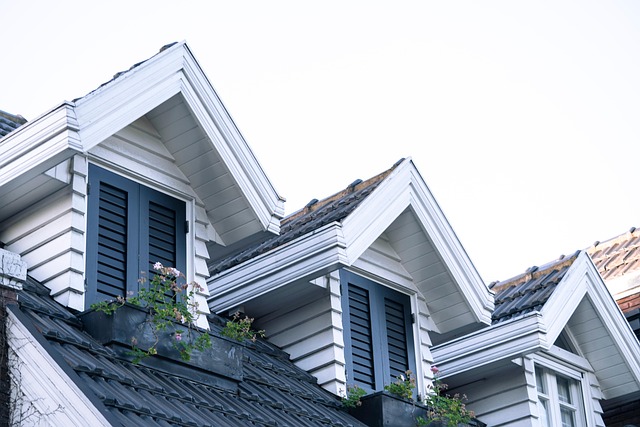Green roof systems, integrating plants into rooftops, offer multiple benefits like improved insulation, reduced heat islands, and enhanced water management. Installation involves a meticulous process starting with assessment and preparation, followed by laying growing medium, selecting vegetation, and setting up irrigation. Regular maintenance, including inspection, watering, weeding, and cleaning, ensures long-term health and performance. Green roofing technology is revolutionizing urban spaces with eco-friendly solutions that mitigate environmental impact, improve air quality, enhance biodiversity, and extend roofing lifespans. Future innovations include solar panels and water collection systems for more sustainable urban environments.
Green roofs and living roofs are transforming urban landscapes, offering not just aesthetic appeal but a range of environmental benefits. These sustainable roof systems, also known as rooftop gardens, provide insulation, mitigate urban heat islands, and support biodiversity. This article delves into the world of green roofing, covering everything from understanding different types and installation processes to exploring maintenance tips and the latest technological advancements driving their popularity. Discover how these eco-friendly roofs contribute to energy-saving solutions and sustainable future cities.
- Understanding Green Roof Systems: Benefits and Types
- The Process of Professional Green Roof Installation
- Maintenance Tips for Optimal Performance and Longevity
- Environmental Impact and Future Trends in Green Roofing Technology
Understanding Green Roof Systems: Benefits and Types
Green Roof Systems, also known as living roofs or rooftop gardens, are becoming increasingly popular as cities seek sustainable roofing solutions. These innovative environmental roofing systems offer a wide array of benefits, including improved insulation, reduced urban heat islands, and enhanced water management. By incorporating plants and vegetation into the roof structure, green roofs provide an eco-friendly alternative to traditional roofing materials.
There are various types of green roof systems, each tailored to different needs and settings. Intensive green roofs support heavy planting and can include features like walking paths and seating areas. Extensive systems, on the other hand, are lightweight and low-maintenance, featuring a mix of grasses, sedums, and other drought-tolerant plants. As urban spaces strive for greener solutions, green roofing technology offers an efficient way to integrate nature into the built environment, contributing to a more sustainable future while enhancing the beauty and functionality of rooftops.
The Process of Professional Green Roof Installation
The process of professional green roof installation involves a series of meticulous steps designed to create and maintain a thriving ecosystem atop a building. It begins with a thorough assessment of the existing rooftop, ensuring structural integrity and preparing the surface for the new sustainable roof system. This includes installing a waterproof membrane and a root barrier to protect the building from potential damage caused by plant roots.
Next, a layer of growing medium is carefully laid down, providing nutrients and drainage for the plants. This is followed by the selection and arrangement of suitable vegetation, tailored to the specific climate and conditions of the location. Professional installers ensure the proper placement of plants, considering their growth habits and water requirements, to create a vibrant and resilient rooftop garden. The final touches involve irrigation system setup and regular monitoring to guarantee the new green roof’s health and longevity, contributing to an energy-saving, eco-friendly urban environment.
Maintenance Tips for Optimal Performance and Longevity
Maintaining a green roof or living roof is an essential practice to ensure its optimal performance and longevity. Regular care is crucial for these eco-friendly roofing systems, which blend nature with urban environments. A key tip is to establish a consistent inspection routine, allowing for early detection of any issues such as damaged plants, leaks, or structural problems. This proactive approach can prevent minor problems from escalating into major repairs.
Proper maintenance involves regular watering, especially during dry periods, to keep the plants healthy and hydrated. Weeding and pruning are also necessary tasks to control unwanted vegetation growth and encourage dense plant coverage. Additionally, ensuring proper drainage is vital to avoid waterlogging, which can be detrimental to the roof’s structure and plants. Regular cleaning of the roof surface helps maintain optimal sunlight exposure for the plants, contributing to overall health and energy-saving benefits of these sustainable roof systems.
Environmental Impact and Future Trends in Green Roofing Technology
Green roofing technology is transforming the way we think about urban spaces, offering a sustainable solution that not only reduces the environmental impact of buildings but also provides numerous ecological benefits. By incorporating living roofs and rooftop gardens, cities can mitigate the urban heat island effect, as these systems help regulate temperatures compared to traditional flat rooftops. Additionally, green roof installations contribute to improved air quality by absorbing pollutants and releasing oxygen, enhancing biodiversity in urban areas, and even extending the lifespan of roofing materials due to reduced exposure to harsh weather conditions.
Looking ahead, the future of green roofing appears bright with ongoing innovations. Environmental roofing solutions are becoming more efficient, focusing on energy-saving design elements such as solar panels integrated into the roof structure and water collection systems for irrigation. As interest in eco-friendly roof gardens grows, we can expect to see advanced materials that mimic natural ecosystems, promoting rapid plant growth and providing habitats for local wildlife. These trends not only contribute to a more sustainable built environment but also inspire architects, urban planners, and homeowners to embrace the beauty and functionality of nature-integrated design.
Green roof systems, also known as living roofs or rooftop gardens, offer a sustainable and aesthetically pleasing solution for urban spaces. With proper professional maintenance, these eco-friendly roof gardens can thrive, providing numerous environmental benefits, including improved insulation, reduced urban heat islands, and enhanced biodiversity. As green roofing technology advances, we can expect even more innovative and energy-saving roof systems in the future, further solidifying their role as essential components of sustainable cities worldwide.
